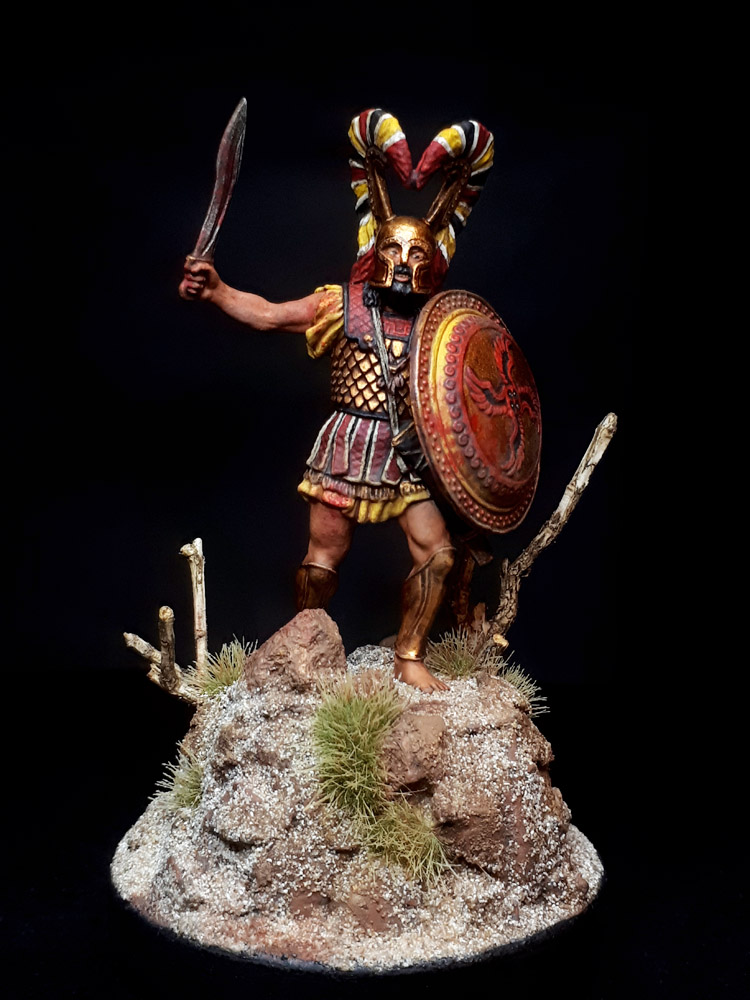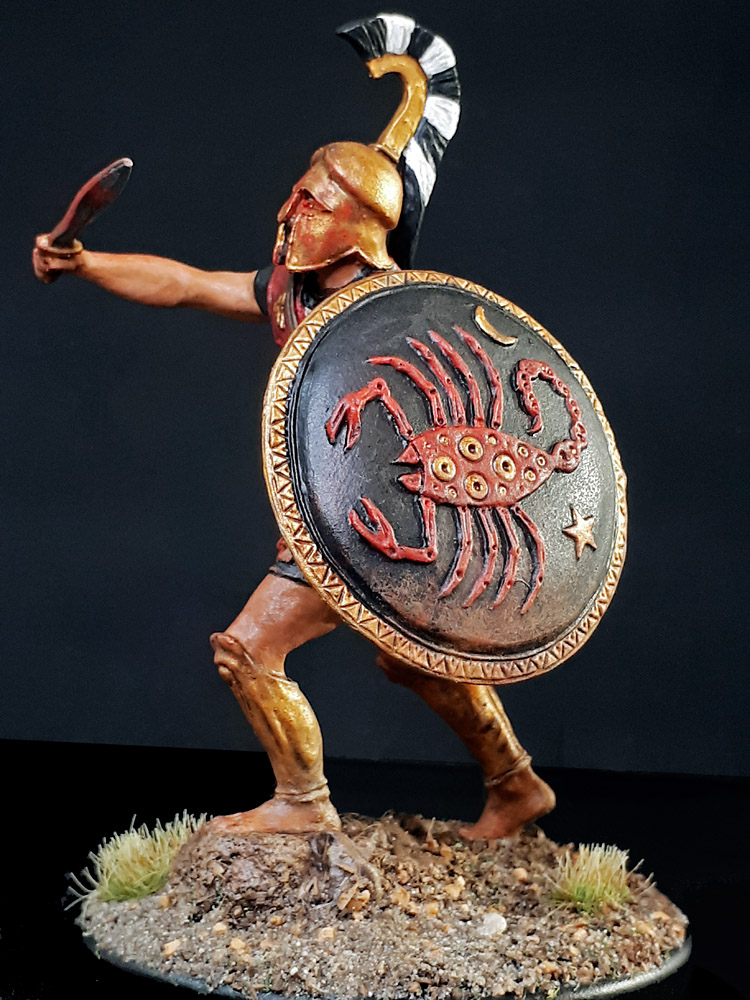
In 480 BC. the huge army of the Persian king Xerxes, crossed from Asia Minor and invaded Greece. To meet the Persians, the Greeks sent an army composed of detachments of hoplites sent by the allied
Greek cities:
Sparta – 300 hoplites
Tegea – 500
Mantinea – 500
Orchomen – 120
Arcadia – 1000
Corinth – 400
Flount – 200
Mycenae – 800
Thespia – 700
Thebes – 400
Phocis – 1000
Total – 5,920 people.

These were the city’s standing detachments of professional, heavily armed hoplite warriors, despatched as advance units while the main armies gathered. The units operated under the command of their own strategic commanders.
Taking a convenient position in the narrow Thermopylae pass, the Greek army for two days held back the onslaught of the Persians, who had a huge numerical superiority. After a traitor from the local inhabitants led the Persians around the Greek defences, the threat of encirclement arose.
Due to this, most of the Greek troops retreated and went to their cities. Only 300 Spartans under King Leonidas remained, who were not allowed to retreat by honor and law. They were joined by 700 Thespians, 400 Thebans and the militia of the local Opunta Locrians, these warriors had to make a stand at Thermopylae to defend their native land – Boeotia and Opunta Locrida, through which the path of the Persian army inevitably ran.
Not expecting victory, but only a glorious death, the remaining Greeks, though hugely outnumbered, fought until the end and died. The Thebans however did separate and surrender.
The hoplite warrior armour often consisted of a bronze Corinthian helmet with a crest, giving it a more imposing and aggressive appearance. A carapace, made of linen or leather, reinforced with bronze plates sewn in the form of scales. Legs are protected by bronze anatomical leggings. The hoplite had a sword and usually a long spear. A large round hoplon shield, often decorated with symbols such as a scorpion or wings to terrify their foes or project a sense of invincibility.
